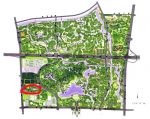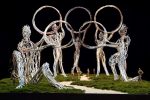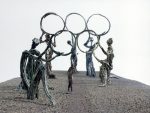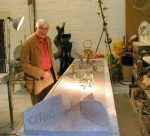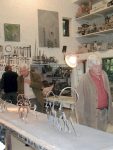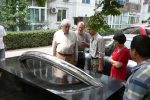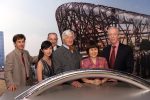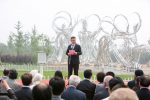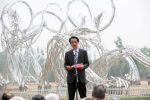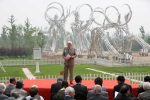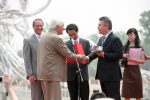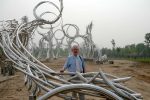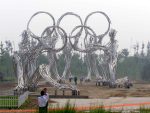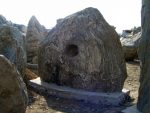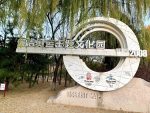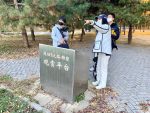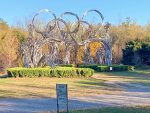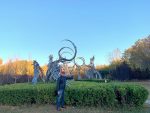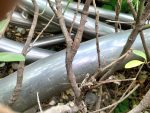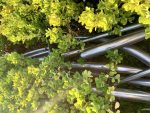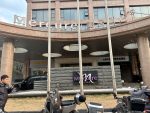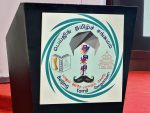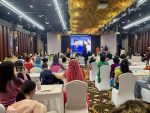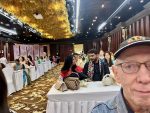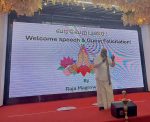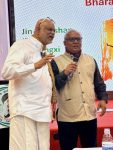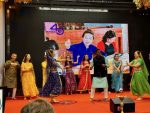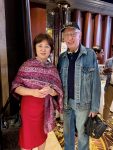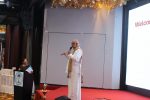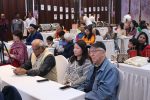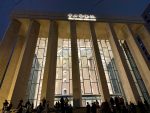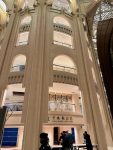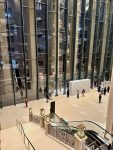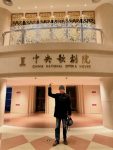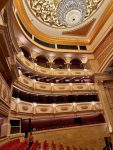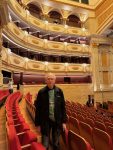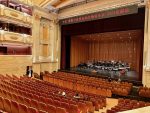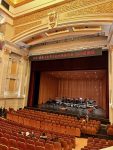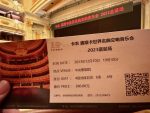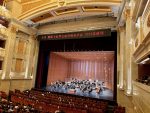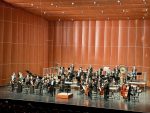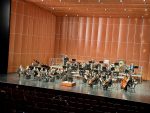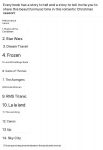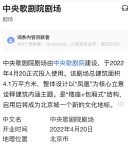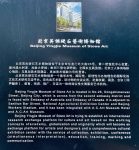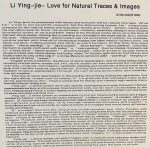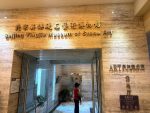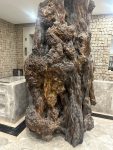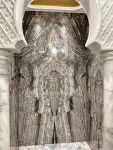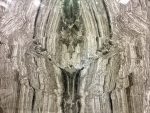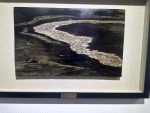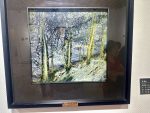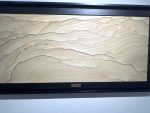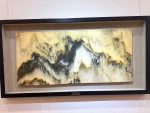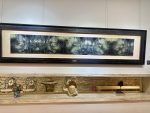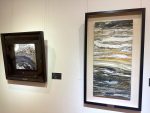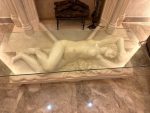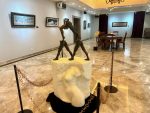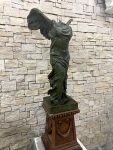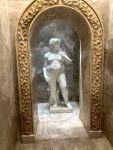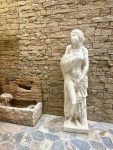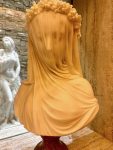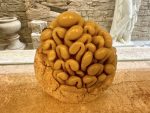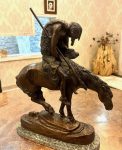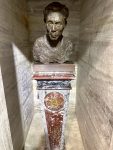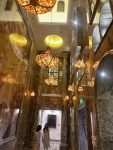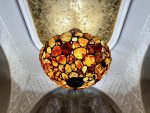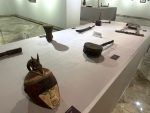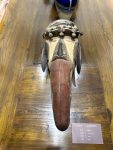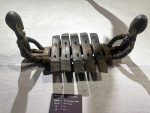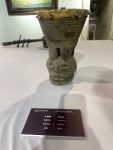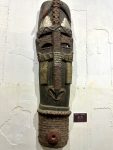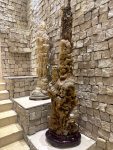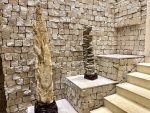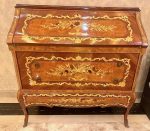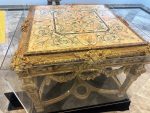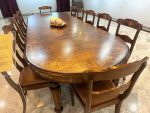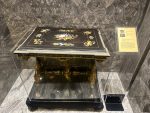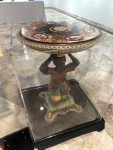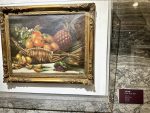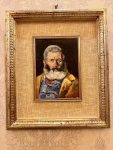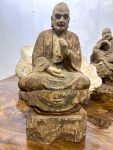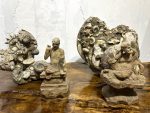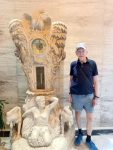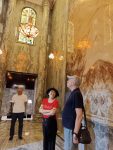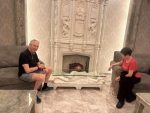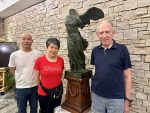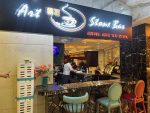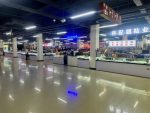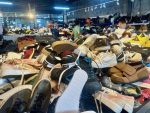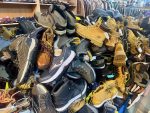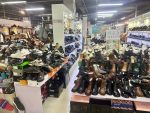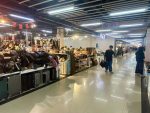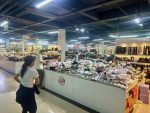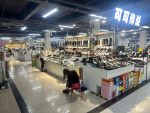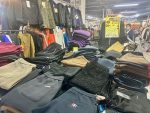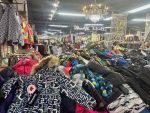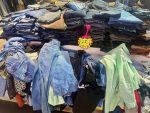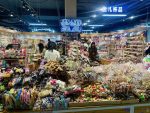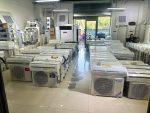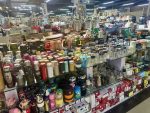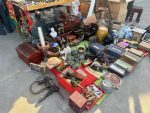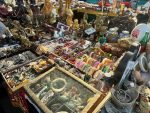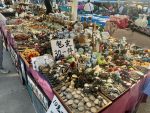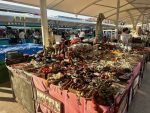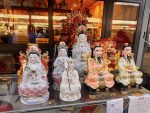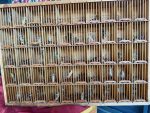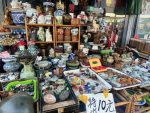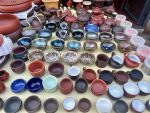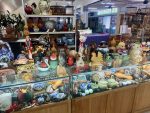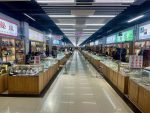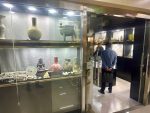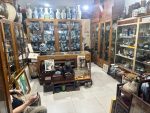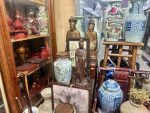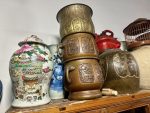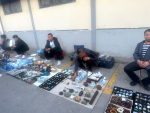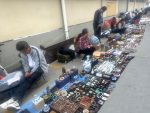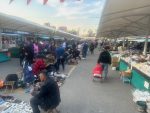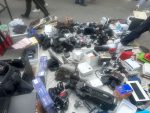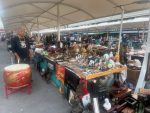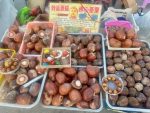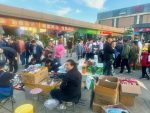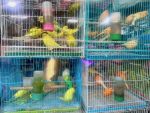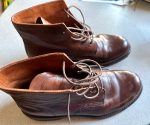Biggest statue?
The huge statue in the Beijing Olympic Green is not really the biggest statue in Asia, that title goes to “Statue of Unity” located in Gujarat, India with a height of 182 m, the World’s tallest statue.
The Athletes Alley, a work of Belgian artist Olivier Strebelle is certainly one of the biggest in recent history and of its kind.
It is a stainless steel sculpture of 100 m long, with a highest point of 20m and average height of 14.5m. The total weight is around 130 ton.
The sculpture was built to the north of the Olympic Village, in the southwest area of the Olympic Forest Park. It was created by the Belgian sculptor Olivier Strebelle, using five different groups of stainless steel sculptures. Each group is of a different height. They form a three-dimensional and can be admired from different angles. Each sculpture set is a piece of individual abstract artwork. The true meaning can only be seen from a specific point from the front: the sculptures then form five athletes to hold up the five Olympic Rings.
The story
It all started during my visit to Brussels when the Belgian Olympic and Interfederal Committee (BOIC – Piet Moons) asked me to visit the atelier of Olivier Strebelle, along with Baron Simon-Pierre Nothomb on 11 May 2004. Olivier had this old dream to build a statue for the 2008 Beijing Olympics.
- First model
- Olivier in atelier
- Olivier in atelier
Reluctant at first we started working on the idea. It was rather “Mission Impossible”, as the Beijing Government declined all proposals to donate some art work for the Olympic Green. As we were pretty good in navigating Chinese administration and bureaucracy, we really succeeded. It was very difficult. We had to convince Olivier to change his design, we involved Prince Philippe (Belgium), we changed the funding to a gift from the Kingdom of Belgium. The Belgian side was often uncooperative, tried to eliminate us from the discussion but finally was told, you go through Gilbert or there will be no statue. We did not however get the full agreed compensation.
It is a long and complicate story and has been the subject of many of my seminars as an example on how to navigate the bureaucracy.
The Belgian technical team was extremely professional, the erection was incredibly complicated.
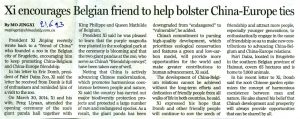 Top management left a lot to desire. At one point Eric Domb was named general manager but he soon left to fulfill his dream bringing pandas to Belgium – the famous Pairi Daiza Zoo.
Top management left a lot to desire. At one point Eric Domb was named general manager but he soon left to fulfill his dream bringing pandas to Belgium – the famous Pairi Daiza Zoo.
- First pipe arrives our office
- Prince Philip
- The local team
In June 2007, the vice-chairman of BOCOG, Mr. Wang Wei and Prince Philippe of Belgium, jointly signed the first tube of the sculpture along with the artist Olivier Strebelle. That was all our idea.
- Karel De Gucht
- Beijing Vice Mayor
- Olivier Strebelle
- Narmon, Olivier, De Gucht
- Gilbert at signed tube
- Gilbert and Sun
It was officially inaugurated on 23 May 2008 in the presence of Beijing’s Vice Mayor Chen Gang, the Belgian Minister of Foreign Affairs Karel De Gucht and many other Chinese and Belgian VIP guests.
Inaugurated and abandoned
Olivier was planning to complete the Athletes Alley by placing a huge rock he had already selected to mark the viewing point, and to add a wall in stone with the list of all donors. Nothing was ever done. We stopped our assistance as we were not getting paid.
- Wall with sponsors
- focal point
- focal rock
- sponsors
Olivier also had the idea to make a movie about the project and I was to help as I have a vast amount of pictures.
Sadly Olivier passed away on 29 July 2017 (age 90 years) in Brussels. We did not get any notice. We lost a dear beloved friend.
I tried to contact his foundation, his relatives and the government of Uccle in Brussels. Zero replies. So I still have a huge collection of documents, pictures and his books. Nobody cares. The Wikipedia post contains errors. The original websites are gone or damaged.
In the past the local Uccle government website had issues and the listed emails did not work. I tried again and it seems the mail service works now. Waiting for their reply.
Our visit 7 November 2022
As part of a major movie being shot about me by CCTV4, we also visited the Olympic Green to see the Athletes Alley.
- entrance to the area
- CCTV4 at viewpoint
- Viewpoint panel
- The sculpture
- here is the signed pipe
- Signed pipe
- Signed pipe
- Signed pipe
A real disappointment. No adequate signage, a damaged explanation panel with mistakes, some pipes that require cleaning and totally wrong gardening.
The planted bushes hide the pipe signed by Prince Philippe, I had to dig through the bushes to locate the pipe.
Who knows about our Belgian statue? Very few and nobody cares.
Rest in Peace Olivier. We will not forget your legacy.
